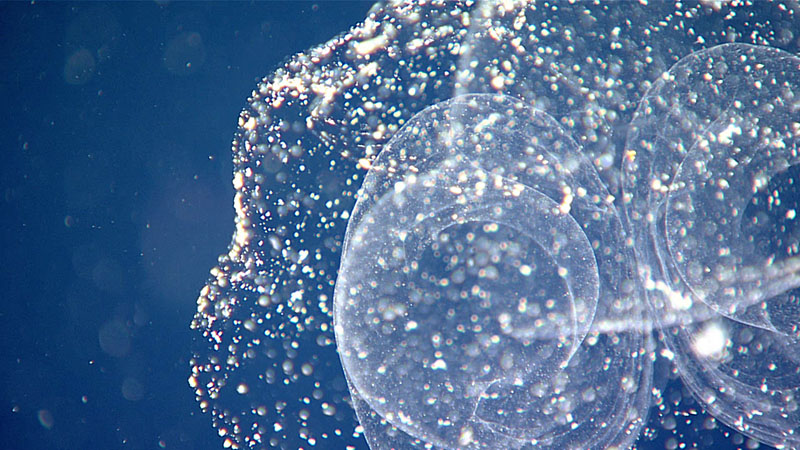

A close look at a larvacean house, seen during the 1200-meter (3,937-foot) water column transect of Dive 20 of the 2021 North Atlantic Stepping Stones expedition. Larvaceans are solitary, free-swimming tunicates that produce a fragile mucus “house” to help filter small particles from the water. A diffuse outer filter catches larger particles that would be too big to fit in the larvacean’s mouth and protects an inner filter, which is used to strain food particles from the water. The larvacean lives nested inside this inner filter and produces a current by beating its tail. This current both keeps the house inflated and moves water through the filter of the house.